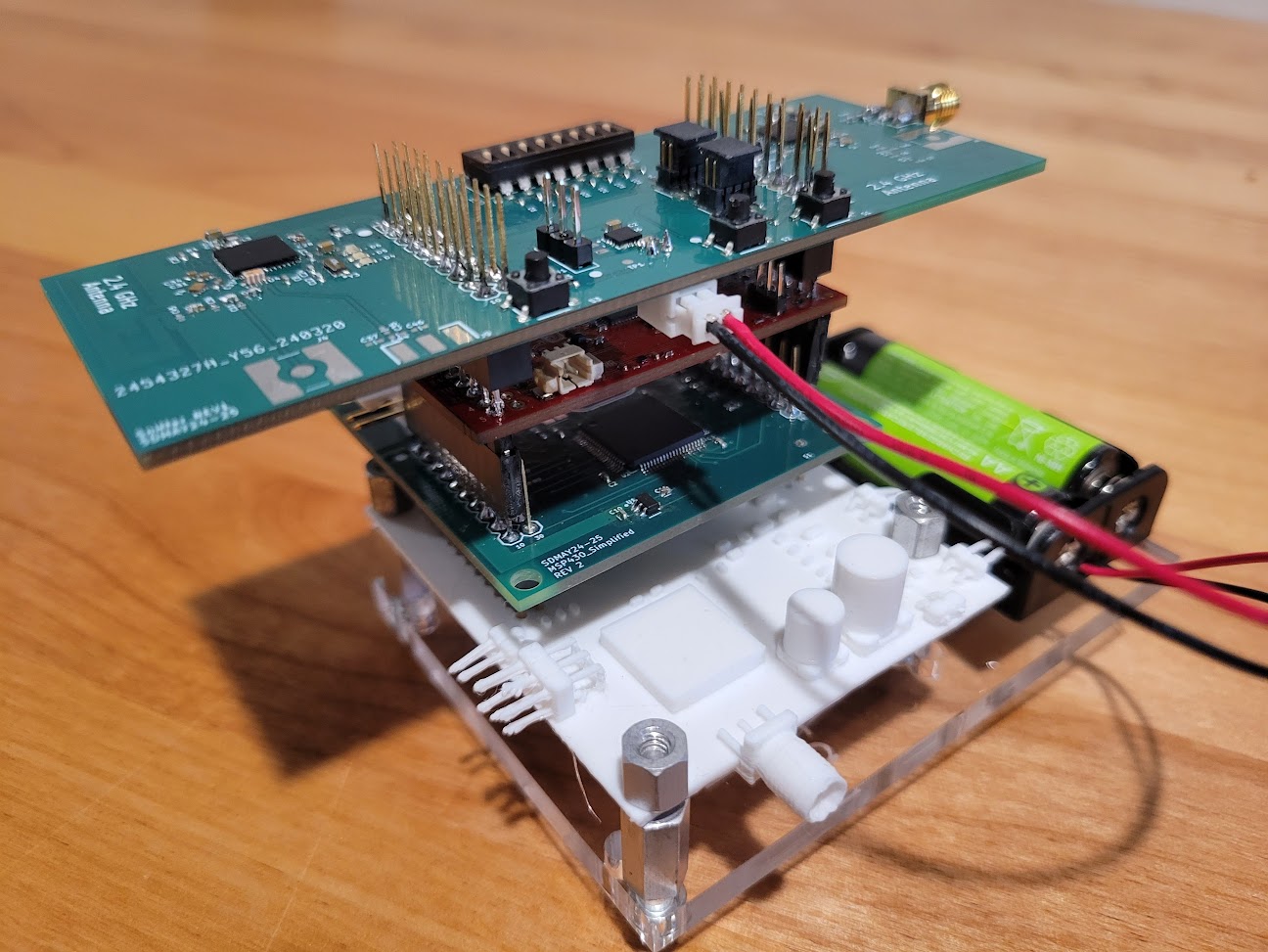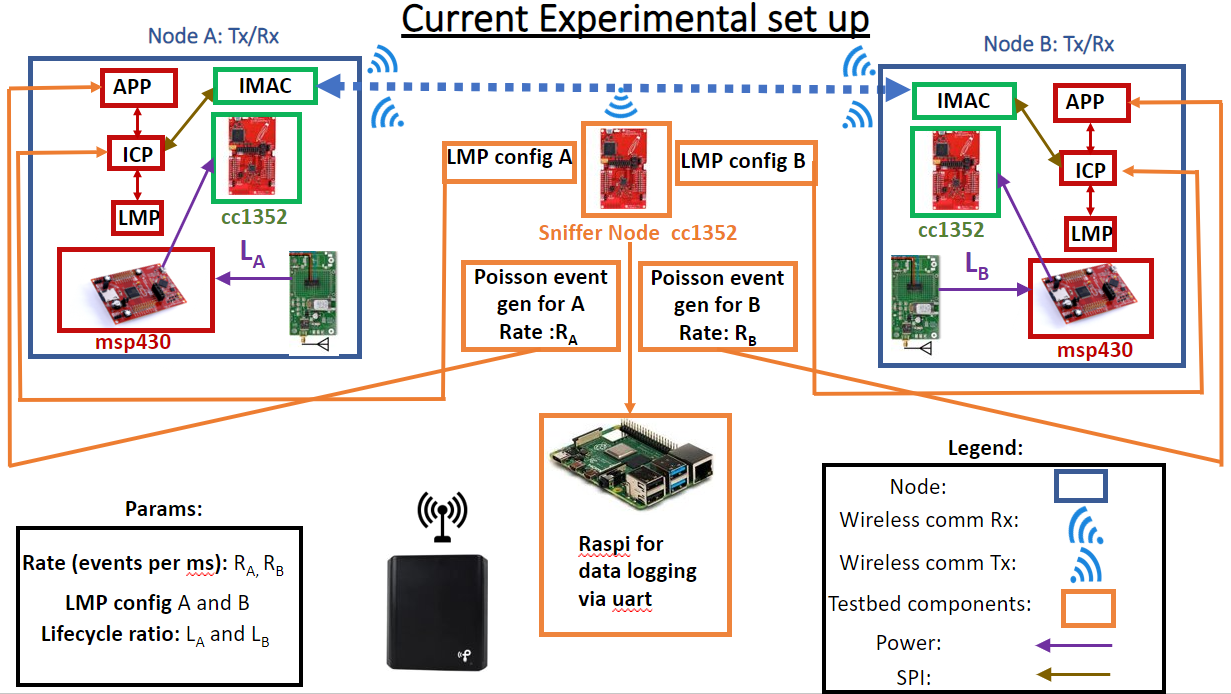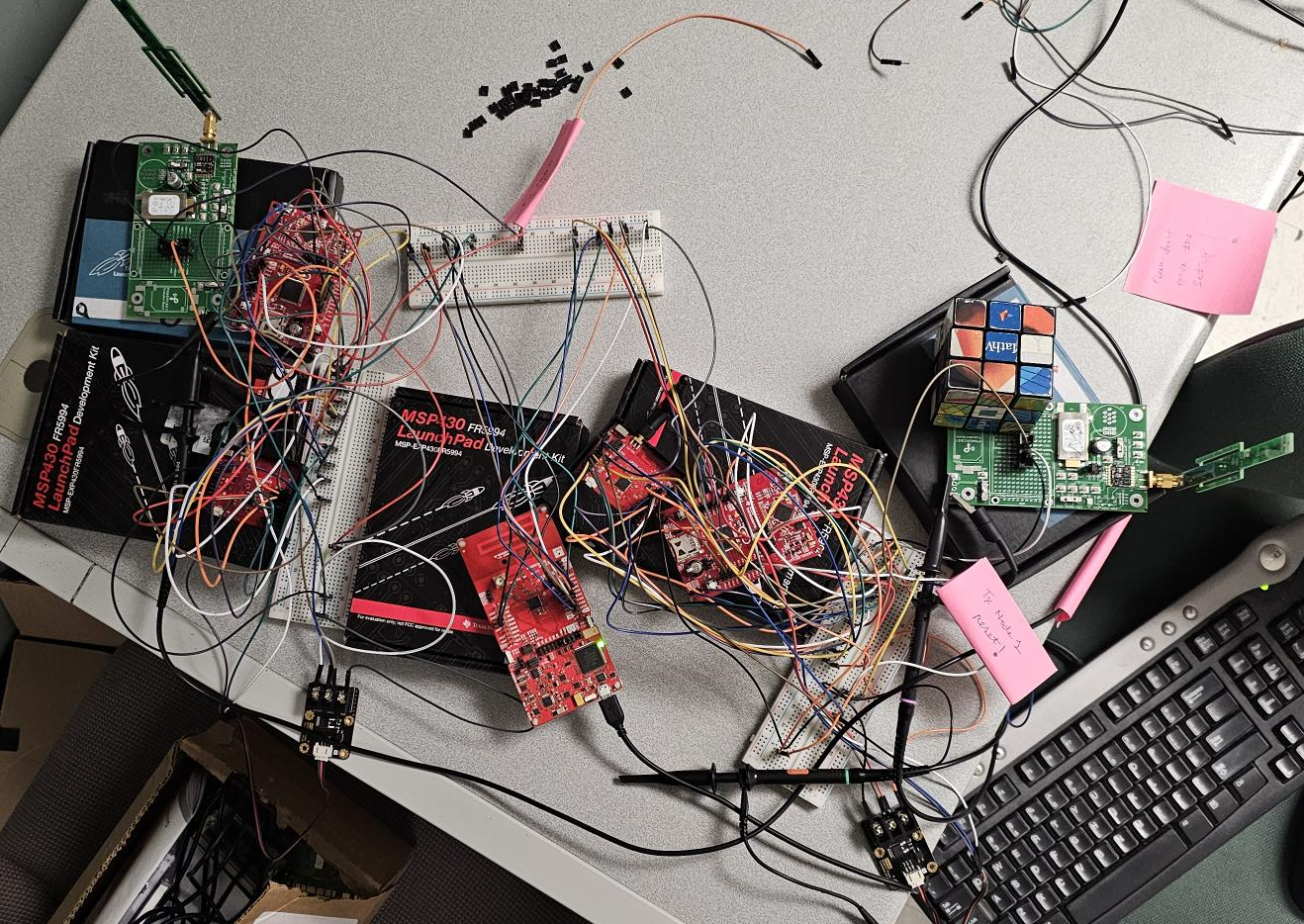Batteryless sensor nodes are an emerging technology that enables
low-cost, low-maintenance, and long-lifetime embedded sensing. Rather
than being wired into a continuous power supply or provisioned with a
battery, these sensor nodes survive solely on harvesting energy from
ambient sources available in their environment, such as RF signals,
solar, vibrational, or thermal. As such, they are a challenge to
design since these sources are often highly variable and very low
power. Our team was tasked with creating a testbed for researchers to
use for the battery-less nodes they are developing.
 Final stackup of our testbed integrated with the device under test.
The 3d printed board is a stand in for a board that the researchers
had not been fabricated yet.
Final stackup of our testbed integrated with the device under test.
The 3d printed board is a stand in for a board that the researchers
had not been fabricated yet.
Project Details
My team had the task of developing a testbed system for testing
multiple batteryless sensor nodes communicating with each other. The
goal of our project was to develop both hardware and software to
test these nodes. Additionally, we had the task of making a cleaner
batterless sensor node hardware or "BOB" node setup of multiple
boards that make it a clean stack. Our system was then connected to
this BOB node and monitored aspects of it; wired data such as up
time due to the Bob nodes not being on all the time. It also
monitored the wireless communication between the BOB nodes. All this
data was sent from the monitor to a central computer or host to
organize the data and made it accessible for researchers. By the end
of the year we had a system for ten of these BOB and monitoring
board pairs. We sucessfully did a 3 node setup in a network
configuration demostrating scalability. The design was scalable
beyond this though, with the ability to be applied to a design with
hundreds of nodes.
Within this project I had two tasks. I was elected group leader, so
I organized the work effort, organized our timeline, managed
communication with our client, managed our documentation, and
handled submissions for class. Outside of the leadership tasks, I
was a member of our software team writing the embedded code that ran
on the microcontrollers to monitor the test and communicates.
Throughout the project, I grew in my embedded systems skills as I
read through preexisting code, read documentation, design system
archtecture, and wrote code. With that work I developed skills with
proposing ideas and describing concerns I see. Additionally, I
developed skills within leadership specifically leading a small
technical group, keeping meetings on topic, and creating agendas. I
also gained skills with figuring out a clients requirements and
preferences when developing a solution for them.
Definitions
Requirements
Project Details
Our Design is described in our design document below. Our project
had complications of multiple PCB designs with RF components and a
network for many codes aggregating data on multiple RF bands. We had
a microcontroller on each band for each node comunicating over SPI.
We ran into many challenges as we developed the project.
Design Document
Final Poster
Final Presentation
Design Document
Final Poster
Final Presentation
Image Gallery
 This is a schematic of the test setup prior to our work. Our's
expanding on this by having one "Sniffer Node" CC1352 per each BOB
node. Additionally, our setup had ten node pairs and could scale
further.
This is a schematic of the test setup prior to our work. Our's
expanding on this by having one "Sniffer Node" CC1352 per each BOB
node. Additionally, our setup had ten node pairs and could scale
further.
 The previous test setup was wire heavy, so our setup put all
boards in a simple stack. Additionally, our Sniffer nodes were
battery powered and communicated test information back to the host
wirelessly making the wires unnecessary and each node isolated.
The previous test setup was wire heavy, so our setup put all
boards in a simple stack. Additionally, our Sniffer nodes were
battery powered and communicated test information back to the host
wirelessly making the wires unnecessary and each node isolated.